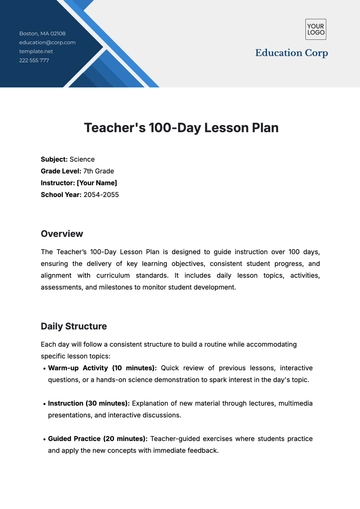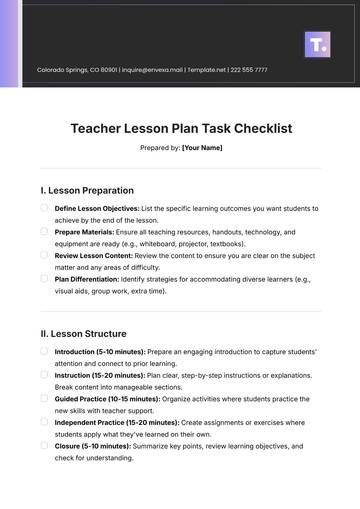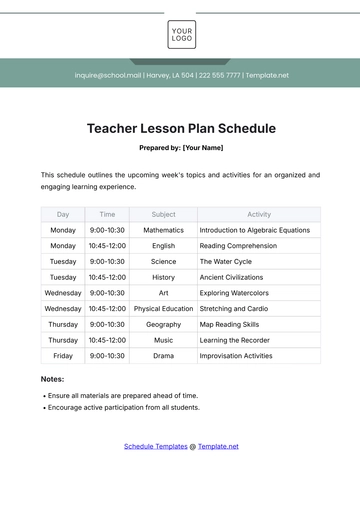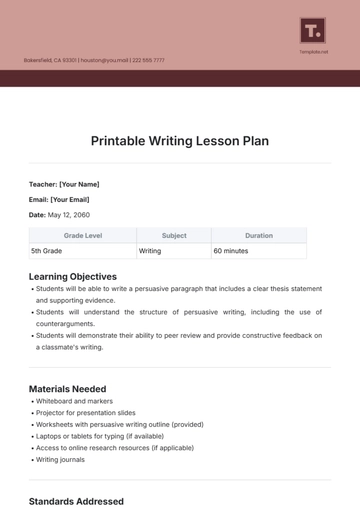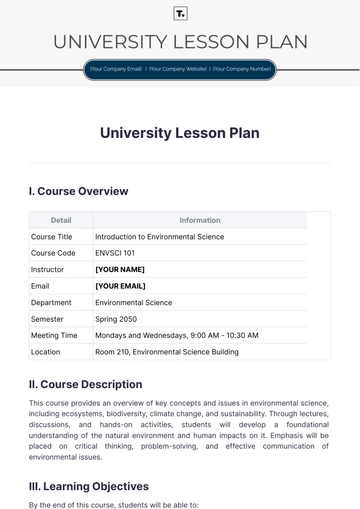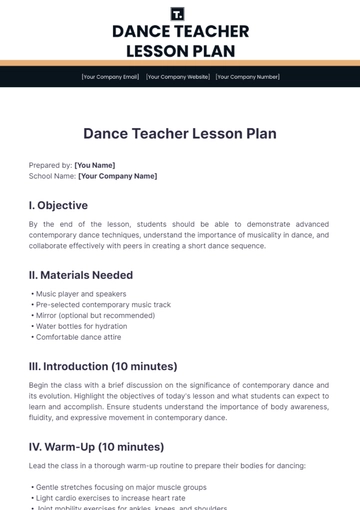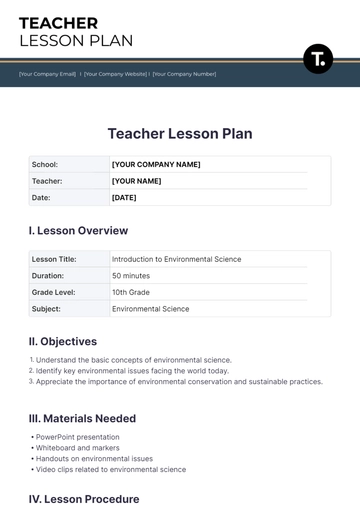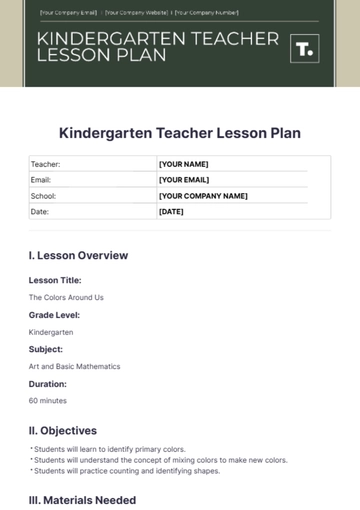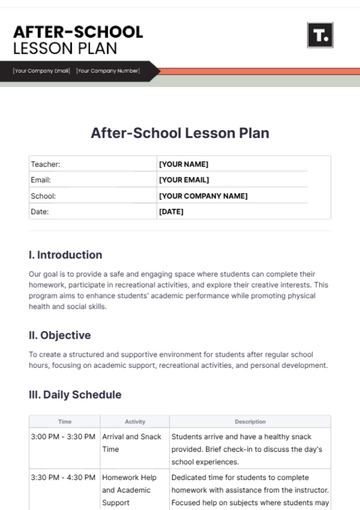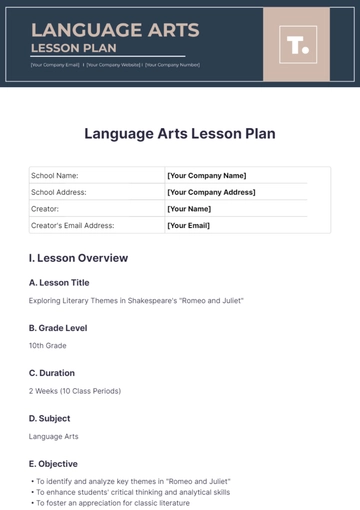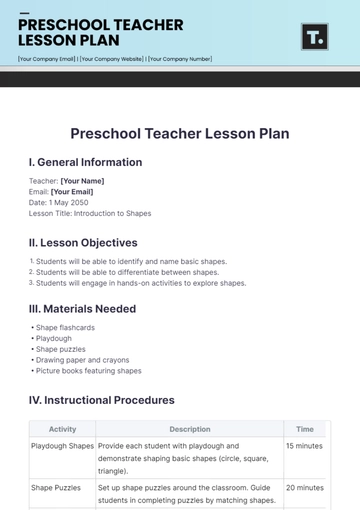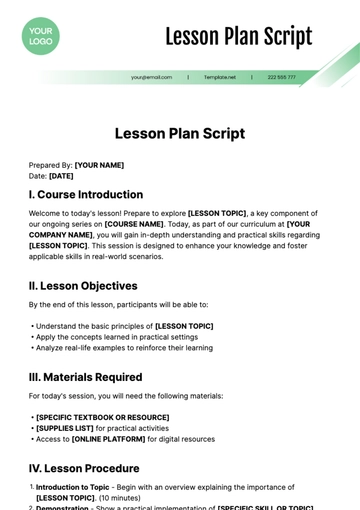Free Printable Writing Lesson Plan
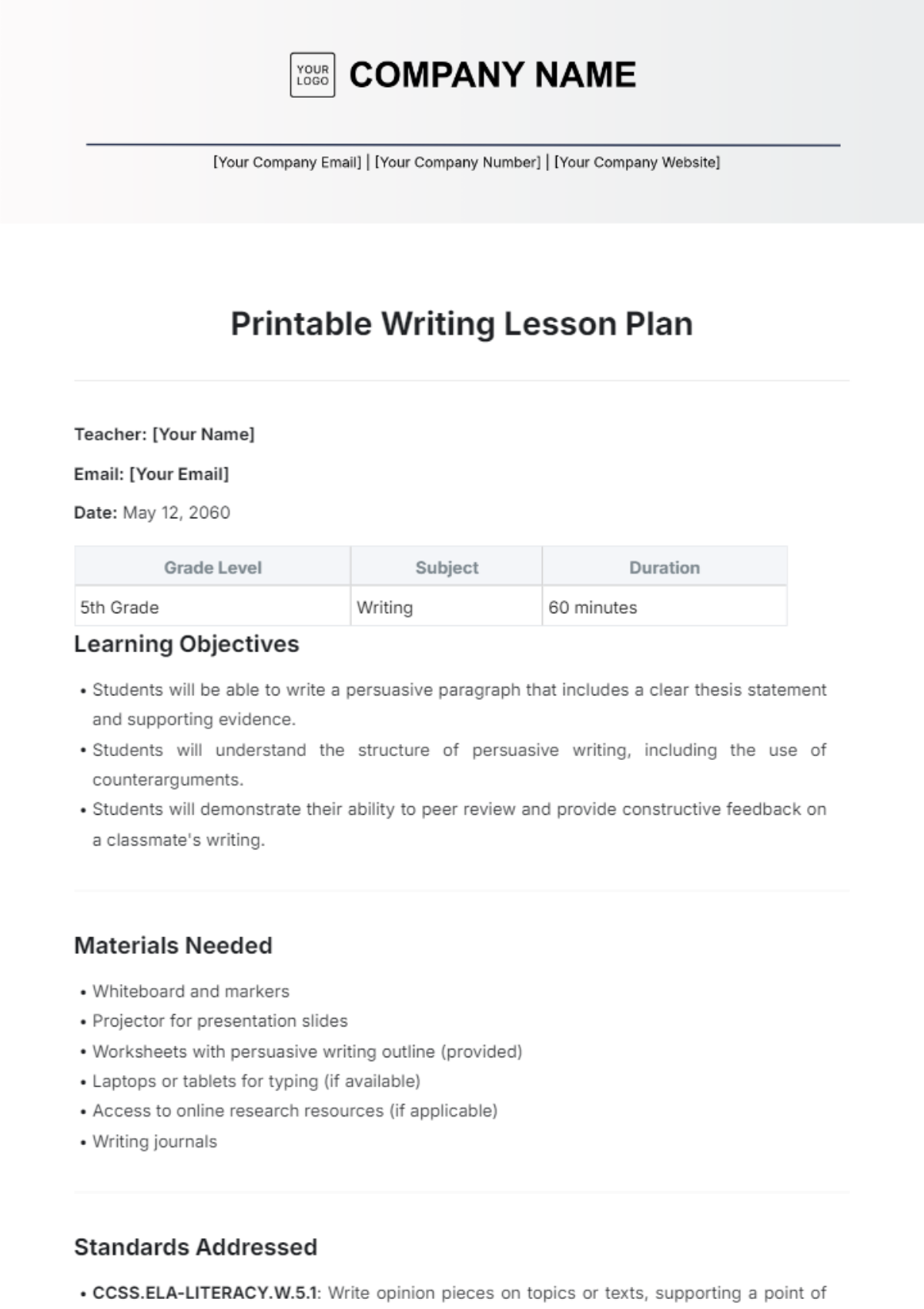
Teacher: [Your Name]
Email: [Your Email]
Date: May 12, 2060
Grade Level | Subject | Duration |
|---|---|---|
5th Grade | Writing | 60 minutes |
Learning Objectives
Students will be able to write a persuasive paragraph that includes a clear thesis statement and supporting evidence.
Students will understand the structure of persuasive writing, including the use of counterarguments.
Students will demonstrate their ability to peer review and provide constructive feedback on a classmate's writing.
Materials Needed
Whiteboard and markers
Projector for presentation slides
Worksheets with persuasive writing outline (provided)
Laptops or tablets for typing (if available)
Access to online research resources (if applicable)
Writing journals
Standards Addressed
CCSS.ELA-LITERACY.W.5.1: Write opinion pieces on topics or texts, supporting a point of view with reasons and information.
CCSS.ELA-LITERACY.W.5.4: Produce clear and coherent writing in which the development and organization are appropriate to the task, purpose, and audience.
Introduction (10 minutes)
Begin with a quick poll: “How many of you think school days should be longer?” (Use thumbs up or down.)
Discuss the results and ask students to share why they feel that way, prompting thoughts on benefits and drawbacks.
Introduce the topic of persuasive writing and explain that today they will write a persuasive paragraph arguing their point of view on this topic.
Direct Instruction (15 minutes)
Teach the structure of a persuasive paragraph:
Thesis Statement: Clearly state your opinion.
Supporting Evidence: Provide at least three reasons or pieces of evidence to support your thesis.
Counterargument: Address a potential opposing view and refute it.
Provide examples from a sample paragraph displayed on the projector, highlighting the thesis, evidence, and counterargument.
Explain the importance of strong transitions to guide the reader.
Guided Practice (15 minutes)
Distribute the persuasive writing outline worksheet.
In pairs, students will brainstorm their ideas on whether school days should be longer or not.
Each pair will create a rough draft outline, listing their thesis statement, supporting points, and counterargument.
Walk around the classroom to provide assistance and ensure understanding, encouraging students to think critically about their points.
Independent Practice (20 minutes)
Students will individually write their persuasive paragraphs using their outlines.
Encourage them to type their paragraphs on laptops or tablets.
Remind them to include a strong thesis, at least three supporting points, and address a counterargument.
Set a timer to help them manage their writing time effectively.
Closure (10 minutes)
Invite a few students to share their persuasive paragraphs with the class.
Discuss as a group what persuasive strategies were effective.
Emphasize the importance of listening to different viewpoints and respectfully presenting their own opinions.
Assessment
Use a rubric that evaluates:
Thesis Statement (10 points): Clarity and position
Supporting Evidence (15 points): Relevance and strength of arguments
Counterargument (10 points): Acknowledgment and refutation
Organization (10 points): Logical flow and structure
Mechanics (5 points): Grammar, punctuation, and spelling
Provide written feedback on each student's paragraph, focusing on strengths and areas for improvement.
Differentiation Strategies
For advanced students: Offer an additional challenge to research statistics related to the topic and include them in their paragraphs.
For struggling students: Provide sentence starters or graphic organizers to help them structure their ideas.
For English Language Learners: Pair them with a buddy for support and provide vocabulary lists related to persuasive writing.
Reflection
What worked well in the lesson? Did students engage with the topic?
What would you change for next time? Was the time allocated sufficient for writing?
How did students respond to the peer review process? Did they provide constructive feedback?
Next Steps
Plan follow-up lessons on persuasive writing techniques, such as using emotional appeals and rhetorical questions.
Consider a debate activity in the following week to further explore persuasive skills in a collaborative setting.
- 100% Customizable, free editor
- Access 1 Million+ Templates, photo’s & graphics
- Download or share as a template
- Click and replace photos, graphics, text, backgrounds
- Resize, crop, AI write & more
- Access advanced editor
Simplify your writing instruction with our Printable Writing Lesson Plan Template from Template.net! This editable and customizable template offers a structured approach to planning engaging writing lessons. With our Ai Editor Tool, you can effortlessly modify it to suit different grade levels and writing styles, ensuring a comprehensive writing curriculum.
